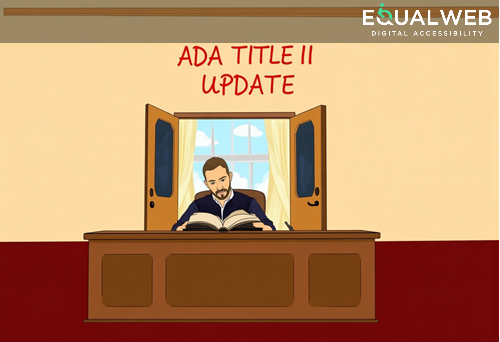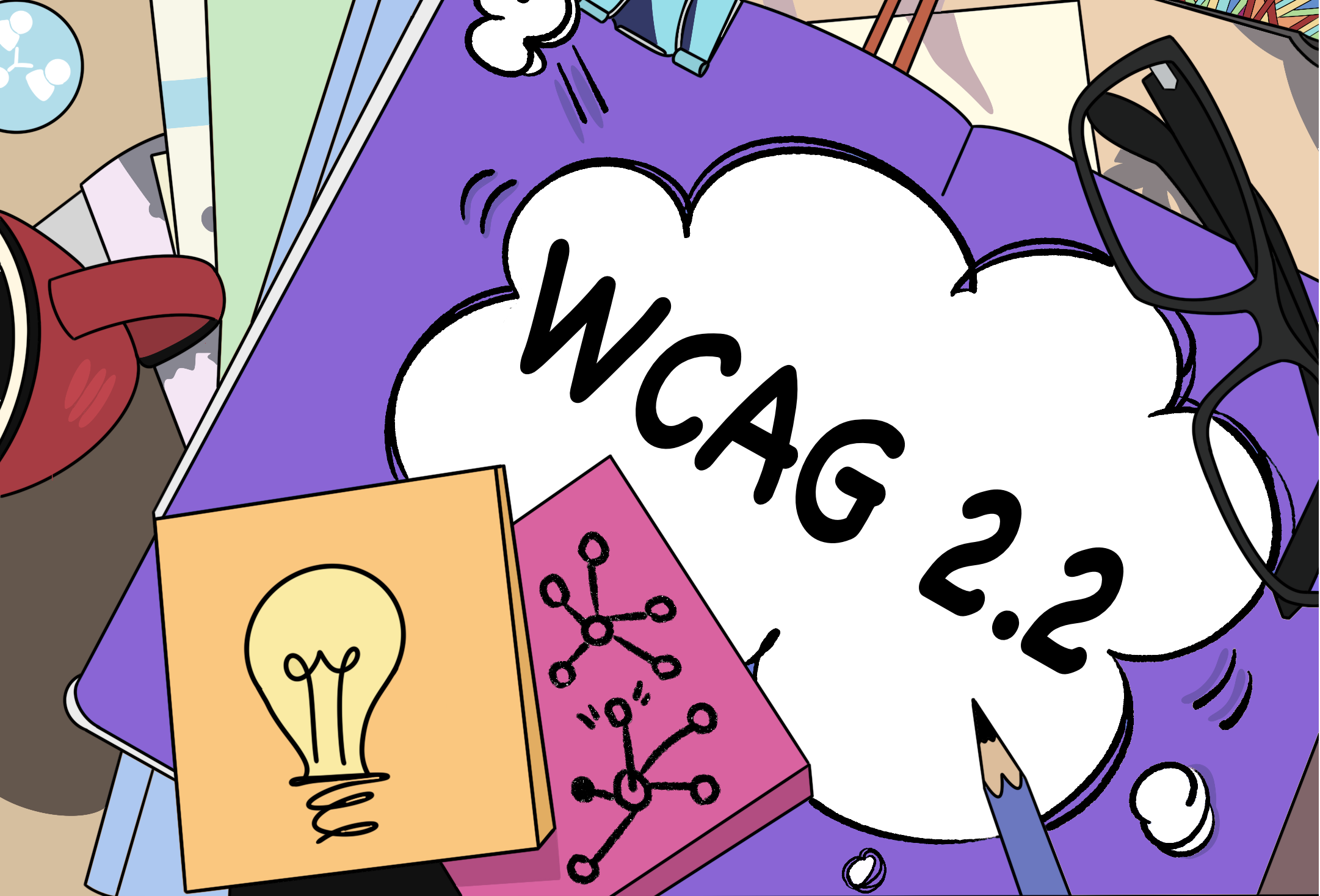Understanding the Importance of ADA Compliance
Before delving into the benefits of EqualWeb’s ADA compliance software, it’s crucial to grasp why ADA compliance matters. The Americans with Disabilities Act, enacted in 1990, prohibits discrimination against individuals with disabilities in all areas of public life, including jobs, schools, transportation, and public and private places that are open to the general public. In the digital sphere, this extends to ensuring that websites and online platforms are accessible to individuals with disabilities, such as those with visual or hearing impairments.
Failure to comply with ADA guidelines not only poses ethical concerns but also opens the door to potential lawsuits and legal ramifications. In recent years, there has been a significant uptick in ADA-related litigation, with businesses of all sizes facing legal action for inaccessible websites. As such, proactively addressing ADA compliance has become imperative for safeguarding businesses against legal liabilities and reputational damage.
The Challenge of Achieving ADA Compliance
Achieving ADA compliance for websites involves adhering to a set of standards outlined in the
Web Content Accessibility Guidelines (WCAG) developed by the
World Wide Web Consortium (W3C). These guidelines encompass various aspects of web accessibility, including perceivability, operability, understandability, and robustness. Implementing these guidelines manually can be labor-intensive and prone to errors, particularly for complex websites with extensive content and functionalities.
For many businesses and website owners, the challenge lies in finding efficient and effective solutions to ensure ADA compliance without compromising user experience or draining resources. Traditional methods of manual auditing and remediation often fall short in terms of scalability, cost-effectiveness, and accuracy, leaving organizations vulnerable to compliance gaps and legal risks.
Understanding WCAG Compliance and Standards
WCAG provides a comprehensive framework for making web content more accessible to individuals with disabilities, covering a wide range of disabilities including visual, auditory, physical, speech, cognitive, language, learning, and neurological disabilities.
WCAG is organized around four core principles, each of which is supported by specific guidelines and success criteria. Let’s go over them briefly.
Perceivable
Information and user interface components must be presentable to users in ways they can perceive. This includes providing alternatives for non-text content such as images, videos, and audio, ensuring content is distinguishable and readable by users with various disabilities, and allowing users to control the presentation of content.
Operable
User interface components and navigation must be operable. This involves ensuring that users can navigate, interact with, and operate the website using a variety of input methods including keyboard, mouse, touch, and voice recognition. Additionally, it includes providing users with sufficient time to read and use content and avoiding content that may cause seizures or physical reactions.
Understandable
Information and the operation of the user interface must be understandable. This encompasses making content clear and easy to understand, providing predictable and consistent navigation and functionality, and helping users avoid and correct mistakes.
Robust
Content must be robust enough to work with current and future technologies. This entails ensuring that content is compatible with a wide range of assistive technologies and devices, including screen readers, speech recognition software, and alternative input devices.
Achieving and maintaining
WCAG compliance requires a systematic approach to accessibility, including regular audits, remediation efforts, and ongoing monitoring. However, manual compliance efforts can be resource-intensive and prone to human error, making it challenging for businesses and website owners to keep pace with evolving standards and guidelines.
Introducing EqualWeb’s AI-Powered Accessibility Software
EqualWeb’s ADA compliance software offers a comprehensive and automated solution to the complexities of achieving and maintaining web accessibility. Powered by advanced artificial intelligence (AI) technology, EqualWeb’s software leverages machine learning algorithms to analyze, identify, and remediate accessibility barriers within websites in real-time.
One of the standout features of EqualWeb’s software is its ability to automatically detect and address accessibility issues across all web pages, including dynamic and interactive content. From image alt-text optimization to color contrast enhancements, EqualWeb’s AI-powered solution ensures that websites meet
WCAG standards.
Moreover, EqualWeb’s software provides customizable accessibility widgets and tools that empower users with disabilities to personalize their browsing experience based on their unique needs and preferences. Whether it’s adjusting text size, contrast settings, or screen reader compatibility, EqualWeb’s software fosters inclusivity and usability for all visitors.
Simplifying ADA Compliance
Let’s now delve deeper into the core functionalities of EqualWeb’s ADA compliance software. EqualWeb’s software takes a two-pronged approach to ADA compliance:
- Automated Detection and Remediation. Utilizing advanced AI algorithms, the software scans websites to identify accessibility barriers across all pages, including dynamic content. It then automatically remediates many of these issues, such as missing alt text for images, ensuring proper keyboard navigation, and improving color contrast. This significantly reduces the need for manual coding and intervention.
- AI-Powered Widget for User Customization. Beyond automated fixes, EqualWeb offers a customizable accessibility widget that empowers users with disabilities to personalize their browsing experience. The Accessibility Profiles feature takes the AI-powered widget to the next level. Automatically launching with the activation of the Auto AI, this function allows users with disabilities to find it easier to adjust the website’s accessibility features to their particular needs. Instead of handpicking the adjustments according to each user’s need, users may choose their accessibility profile which will automatically select the functions that allow for the best compatibility between the website and their needs. For example, a blind user may select the “Blindness” feature that automatically sets the Screen Reader Adjustment and Image Descriptions functions; a dyslexic user may select the “Dyslexia” feature that automatically selects the Dictionary and Reading Guide functions; and so forth.
The ADA compliance software is principally divided into three main categories of functionality:
- Navigation Adjustment.
- Color Adjustment.
- Content Adjustment.
Let’s have a quick look into these three adjustments for web accessibility enhancement and ADA compliance.
Navigation Adjustment
These functions mainly cater to the blind, epileptic, those with motor impairments, elders, and others. They assist people with disabilities to navigate the website’s pages correctly and semantically. Users can modify the website’s layout and structure for easier navigation. This might involve features like skip links that allow users to jump to the main content area, or breadcrumb trails that enhance their understanding of their location within the website`s hierarchy.
Color Adjustment
Individuals with visual impairments can adjust the website’s color scheme and contrast levels to improve readability. This can involve options to increase color contrast between text and background, or the ability to switch to color-blind friendly palettes.
Content Adjustment
These functions included anything from scaling up font sizes, changing font styles, adjusting line spacing, highlighting headlines, and more, so individuals living with disabilities can read and engage with the content of the website better. These functions allow users to modify the presentation of website content for better comprehension.
EqualWeb’s Alignment with WCAG Standards
EqualWeb’s ADA compliance software is designed with a strong emphasis on adherence to WCAG standards, ensuring that websites meet the criteria outlined in the guidelines. By leveraging advanced AI technology, EqualWeb’s software systematically evaluates websites against WCAG success criteria, identifies accessibility barriers, and implements necessary remediations in real-time.
From ensuring proper labeling and alternative text for images to optimizing keyboard navigation and ensuring compatibility with assistive technologies, EqualWeb’s software addresses a wide range of WCAG requirements with precision and efficiency. Moreover, EqualWeb’s software undergoes regular updates and enhancements to align with the latest WCAG guidelines, providing users with ongoing assurance of compliance and accessibility.
By partnering with EqualWeb and incorporating its ADA compliance software into their digital strategy, businesses and website owners can rest assured knowing that their online platforms are not only compliant with legal requirements but also aligned with the highest standards of web accessibility. With EqualWeb’s commitment to
WCAG compliance, achieving inclusivity and usability for all users becomes not just a goal but a tangible reality in the digital landscape.
Catering Diverse Disabilities
The beauty of EqualWeb’s ADA compliance software lies in its ability to cater to a wide range of disabilities and impairments. Here are some examples:
Visual Impairments. Color adjustments, text size modifications, and dyslexia-friendly fonts directly address the needs of users with visual impairments.
Cognitive Disabilities. Features like simplified layouts and clear navigation structures can improve website usability for users with cognitive disabilities.
Motor Impairments. Keyboard navigation enhancements ensure users who rely on keyboard controls can effectively interact with the website.
Auto AI Accessibility Widget Pricing
EqualWeb provides four main ADA compliance software plans: Small, Medium, Large, and Huge.
- The Small plan is an Auto AI-powered widget for small-size websites with up to 100 pages.
- The Medium plan is an Auto AI-powered widget for small-size websites with up to 1,000 pages.
- The Large plan is an Auto AI-powered widget for small-size websites with up to 10,000 pages.
- The Huge plan is an Auto AI-powered widget for small-size websites with up to 100,000 pages.
EqualWeb also offers a more comprehensive, ADA Managed Compliance plan that includes manual remediation by certified web accessibility experts and other perks and benefits. This is an all-encompassing, hands-on web accessibility solution that ensures the highest levels of accessibility in the market. We offer this plan to enterprises or websites that require customized solutions for their specific needs. For a quote for your website, contact us through the Pricing page.
Beyond the Widget: Ongoing Monitoring
While the AI-powered widget offers a significant layer of accessibility, EqualWeb’s software goes a step further.
EqualWeb also offers a powerful
Web Accessibility Monitor enhancement tool which ensures repeated monitoring for web accessibility errors and issues that may come up with website updates or changes, or issues that were not addressed by the Auto AI widget. Continuous monitoring scans the website for any changes or updates that might introduce new accessibility barriers. This proactive approach ensures ongoing compliance with evolving WCAG standards, in an all-year, comprehensive, all-encompassing manner.
A second scanning tool that EqualWeb offers is the
Web Accessibility Crawler. The Crawler is a unique software solution that scans entire websites from the comfort of your browser. This real-time Chrome plugin us lightweight and scans behind person login pages as well, simplifying and making the scanning process super fast and effective.
The Benefits of EqualWeb’s ADA Compliance Software
By incorporating EqualWeb’s ADA compliance software into their digital infrastructure, businesses and website owners stand to gain numerous benefits:
- Legal Protection: Mitigate the risk of ADA-related lawsuits and penalties by proactively addressing accessibility barriers and ensuring compliance with regulatory requirements.
- Enhanced Reputation: Demonstrate a commitment to inclusivity and social responsibility, thereby enhancing brand reputation and credibility among customers and stakeholders.
- Improved User Experience: Create a seamless and accessible browsing experience for all users, regardless of their abilities or assistive technologies, leading to increased engagement and satisfaction.
- Time and Cost Savings: Streamline the process of achieving ADA compliance with an automated solution that eliminates the need for manual auditing and remediation, saving valuable time and resources.
- Continuous Monitoring and Updates: Benefit from ongoing monitoring and updates to ensure ongoing compliance with evolving accessibility standards and guidelines.
Conclusion
In an era where digital accessibility is not just a nicety but a legal imperative, EqualWeb’s AI-powered accessibility software emerges as a beacon of innovation and efficiency. By leveraging advanced technology to automate the process of achieving ADA compliance, EqualWeb empowers businesses and website owners to prioritize accessibility without sacrificing productivity or peace of mind. With EqualWeb’s software, compliance becomes more than just a checkbox—it becomes a seamless integration of inclusivity into the fabric of the digital landscape, one nuisance taken off the to-do list.
Join EqualWeb’s Auto AI accessibility plans



